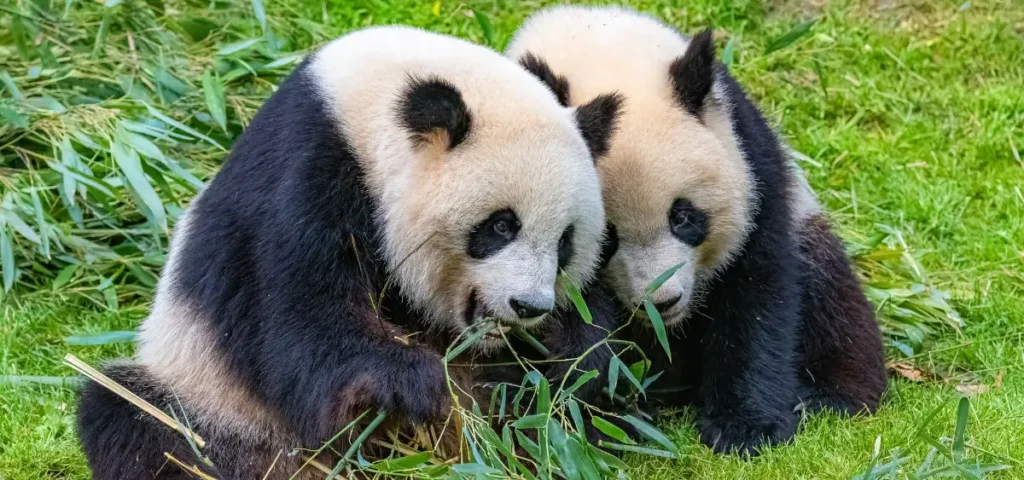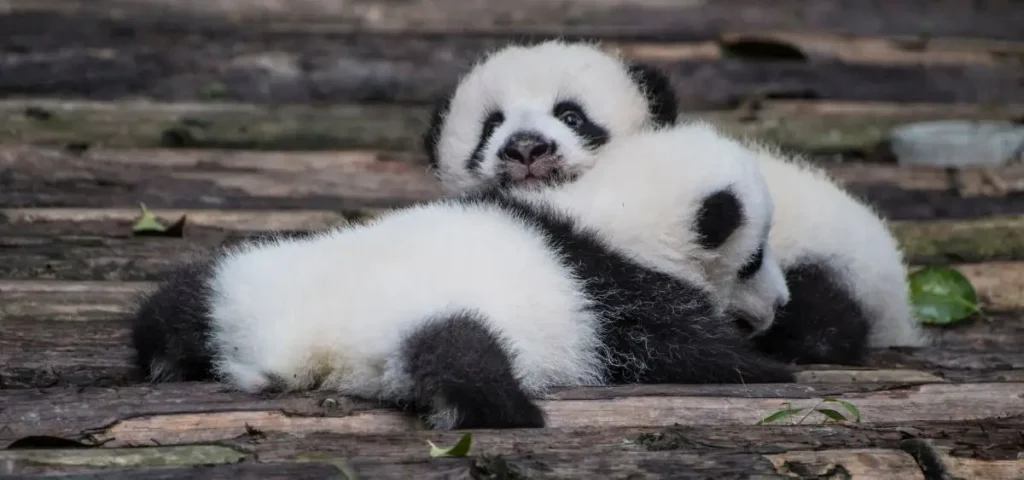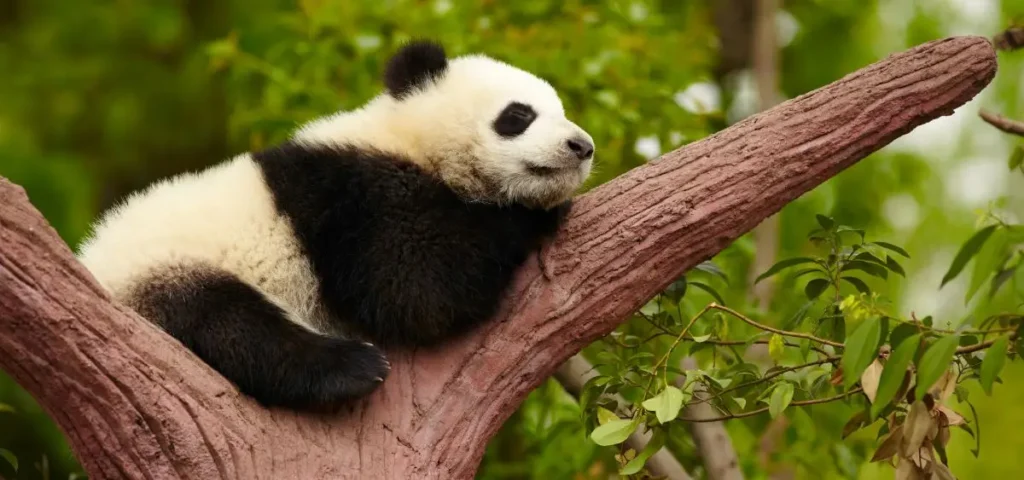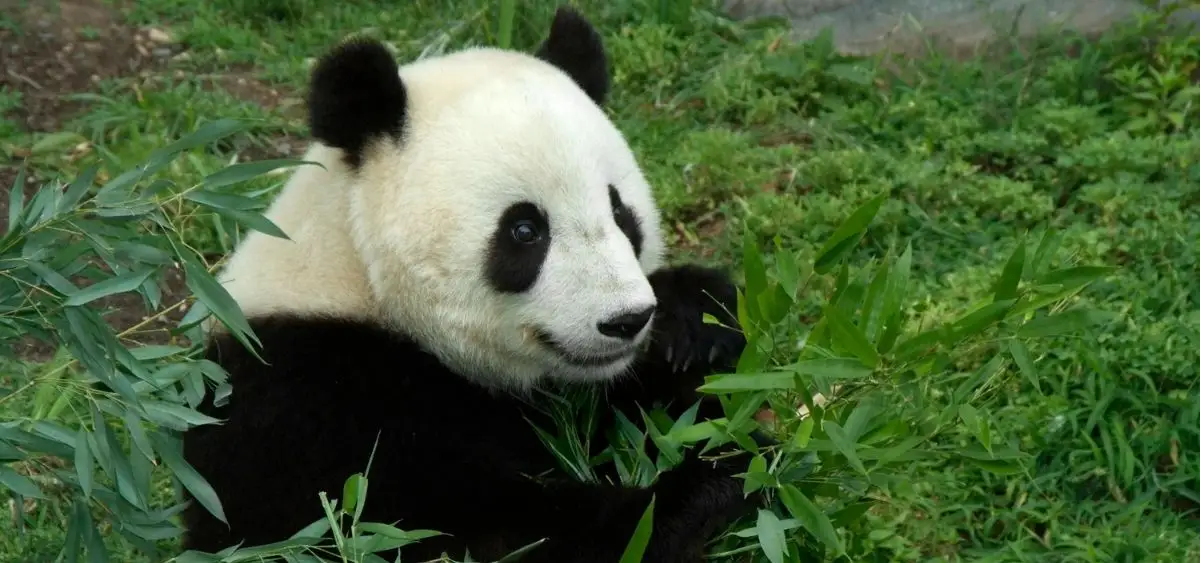Giant Pandas are a symbol of peace, strength, and the delicate balance of nature. Known for their striking black and white fur, these gentle giants have captured the hearts of millions worldwide. But behind their adorable appearance lies a tragic reality. The Giant Panda is an endangered species, facing numerous threats to its survival. In this blog, we explore the alarming plight of Giant Pandas, the ongoing efforts for their conservation, and how you can help protect them.
Also, read: The Dead Sea Crisis Explained: Nature’s Wonder at Risk
The Giant Panda’s Endangered Status
Giant Pandas have long been on the endangered species list. According to the latest estimates, fewer than 1,900 Giant Pandas remain in the wild, with the majority living in the mountainous regions of Sichuan Province in China. Once spread across China, their habitat has shrunk dramatically over the years. This rapid decline in numbers has led to intense global efforts aimed at protecting these creatures.
The main threat to Giant Pandas is habitat loss. They rely heavily on bamboo forests, which make up nearly 99% of their diet. As deforestation increases, their food source diminishes, pushing them closer to extinction. Climate change has also worsened the situation, affecting the growth of bamboo and the availability of suitable habitats.
Also, read: Greenhouse Effect: The Hidden Danger Behind Climate Change

The Role of Panda National Parks and Habitat Restoration
One of the most significant steps taken to save Giant Pandas is the establishment of Panda National Parks. These protected areas serve as refuges where Pandas can live and breed without the constant threat of human encroachment. The Giant Panda National Park, a 10,000-square-kilometer sanctuary, is one of the largest efforts to protect these animals. Habitat restoration is also a key component, focusing on replanting bamboo forests and maintaining ecological balance to ensure Pandas have a sustainable environment.
Wildlife protection policies have been put in place to safeguard Panda habitats, with local authorities working alongside international organizations. This includes enforcing laws to prevent poaching and illegal logging in Panda habitats.
Also, read: Unleash the Sun’s Power: Your Guide to Solar Energy for a Sustainable Future
The Importance of Captive Breeding Programs
While habitat restoration and protection are crucial, captive breeding programs have also played a key role in the recovery of the Giant Panda population. Zoos and research centers around the world, particularly in China, have successfully bred Pandas in captivity, increasing their numbers and helping to preserve their genetic diversity. These programs also serve as vital educational tools, raising awareness about the challenges Pandas face and how we can all contribute to their conservation.
In addition to breeding programs, Panda research centers are crucial. These centers focus on understanding Panda behavior, health, and reproduction. They are working tirelessly to improve Panda Cubs’ survival rates, which remain low due to the challenges of raising pandas in captivity and the slow reproductive rate of the species.
Also, read: Billionaire Gives Away $3 Billion Company to Save the Planet!
Panda Diplomacy and International Cooperation
Another fascinating aspect of Panda conservation is Panda Diplomacy. For decades, China has used the Giant Panda as a diplomatic tool, gifting pandas to other countries as symbols of goodwill. This gesture has led to the creation of panda exhibits in zoos around the world, from the United States to Japan. In exchange, these countries have committed to funding conservation efforts in China, reinforcing the importance of international cooperation in saving this iconic species.
The WWF Panda logo is another symbol of global efforts in conservation. This logo is a reminder of the importance of protecting endangered species and ecosystems. As a part of their mission, the World Wide Fund for Nature (WWF) has supported numerous initiatives aimed at increasing Panda population growth and preserving their habitats.
Also, read: The Rise of the Circular Economy: How Tech is Reducing Waste
The Growing Role of Ecotourism
In recent years, ecotourism in China has also become a critical factor in Panda conservation. Tourists from around the world visit Panda research centers and Panda National Parks, generating revenue that directly funds conservation programs. The presence of tourists encourages local communities to protect the environment, ensuring that Panda habitats remain intact. This has created a positive cycle of economic and environmental benefits.
Genetic Diversity and the Future of Pandas
The future of the Giant Panda depends not just on the number of individuals in the wild but also on the genetic diversity in Pandas. With such a small population, there is a risk of inbreeding, which can lead to health problems and reduced fertility rates. Researchers are working hard to ensure that Pandas have a diverse gene pool, which is essential for their long-term survival.
Also, read: Carbon Capture Technology: Can We Suck Up Our Emissions?

The Ongoing Challenge: Climate Change and Pandas
Climate change is one of the most pressing threats facing Giant Pandas today. As temperatures rise, the bamboo forests they depend on are being pushed to higher altitudes. This reduces the available habitat, making it more difficult for Pandas to find food. Climate change also increases the frequency of extreme weather events, which can destroy habitats and disrupt Panda populations. Addressing climate change is vital for ensuring the survival of Pandas in the wild.
Panda Conservation Achievements and What’s Next
Despite the challenges, there have been significant Panda conservation achievements in recent years. Thanks to efforts like habitat restoration, captive breeding, and international collaboration, the Giant Panda population has seen a gradual increase. However, there is still much work to be done. Continued efforts are needed to ensure that these animals thrive in the wild, not just survive.
As of now, Giant Pandas are no longer classified as critically endangered, but they are still considered vulnerable. Conservationists remain optimistic, but the battle for the Panda’s survival is far from over. With global support and continued conservation efforts, there is hope that Giant Pandas will not only survive but thrive for generations to come.
Also, read: Global Crisis! Impact of Climate Change Are Worse Than Expected
How You Can Help
Support Conservation Organizations – Donate to organizations like WWF that work on the ground to protect Pandas and their habitats.
- Spread Awareness – Share information about Panda conservation to raise awareness and educate others.
- Be Eco-Friendly – Support sustainable practices that help reduce deforestation and protect natural habitats.
- Visit Panda Centers – If you’re traveling to China or another country with Panda exhibits, support ecotourism and responsible travel.

Conclusion
The Giant Panda’s future is still uncertain, but thanks to worldwide efforts, their population is slowly recovering. The combined forces of Panda conservation, habitat restoration, and international cooperation are creating a brighter future for these amazing animals. If we continue to support these efforts, we can ensure that the Giant Panda, a symbol of wildlife conservation, does not vanish forever. Let’s all do our part in protecting this majestic creature before it’s too late. Together, we can save the Giant Panda.
Also, read: Turning Storm-Damaged Wood into Music and Hope – VAIA Cube
FAQs
1. How long do Giant Pandas live?
In the wild, Giant Pandas can live up to 20 years, although they typically live around 14-15 years. In captivity, they have been known to live longer, sometimes reaching up to 30 years due to the protection and medical care they receive.
2. How do Giant Pandas reproduce?
Giant Pandas have a slow reproduction rate. Female pandas are only fertile for about 2-3 days each year, making breeding efforts challenging. Captive breeding programs have been instrumental in increasing the panda population by helping pandas mate during their brief breeding window and ensuring better care for newborns.
3. Where can you see Giant Pandas in the world?
Giant Pandas can be seen in zoos across the globe, with prominent exhibits in the Smithsonian National Zoo (USA), San Diego Zoo (USA), and the Wolong Panda Research Center (China). Additionally, there are Panda Research Centers in China, particularly in Sichuan, where you can observe pandas in their natural habitat or visit captive breeding programs.
4. What is the Giant Panda’s role in Chinese culture?
In Chinese culture, the Giant Panda is seen as a symbol of peace and harmony. It is regarded as a national treasure and represents China in international diplomacy. The WWF Panda logo is also a global symbol for environmental conservation.
5. Are Giant Pandas solitary animals?
Yes, Giant Pandas are typically solitary creatures. They mark their territory with scent markings and prefer to live alone, except during mating season or when a mother is raising her cub.










